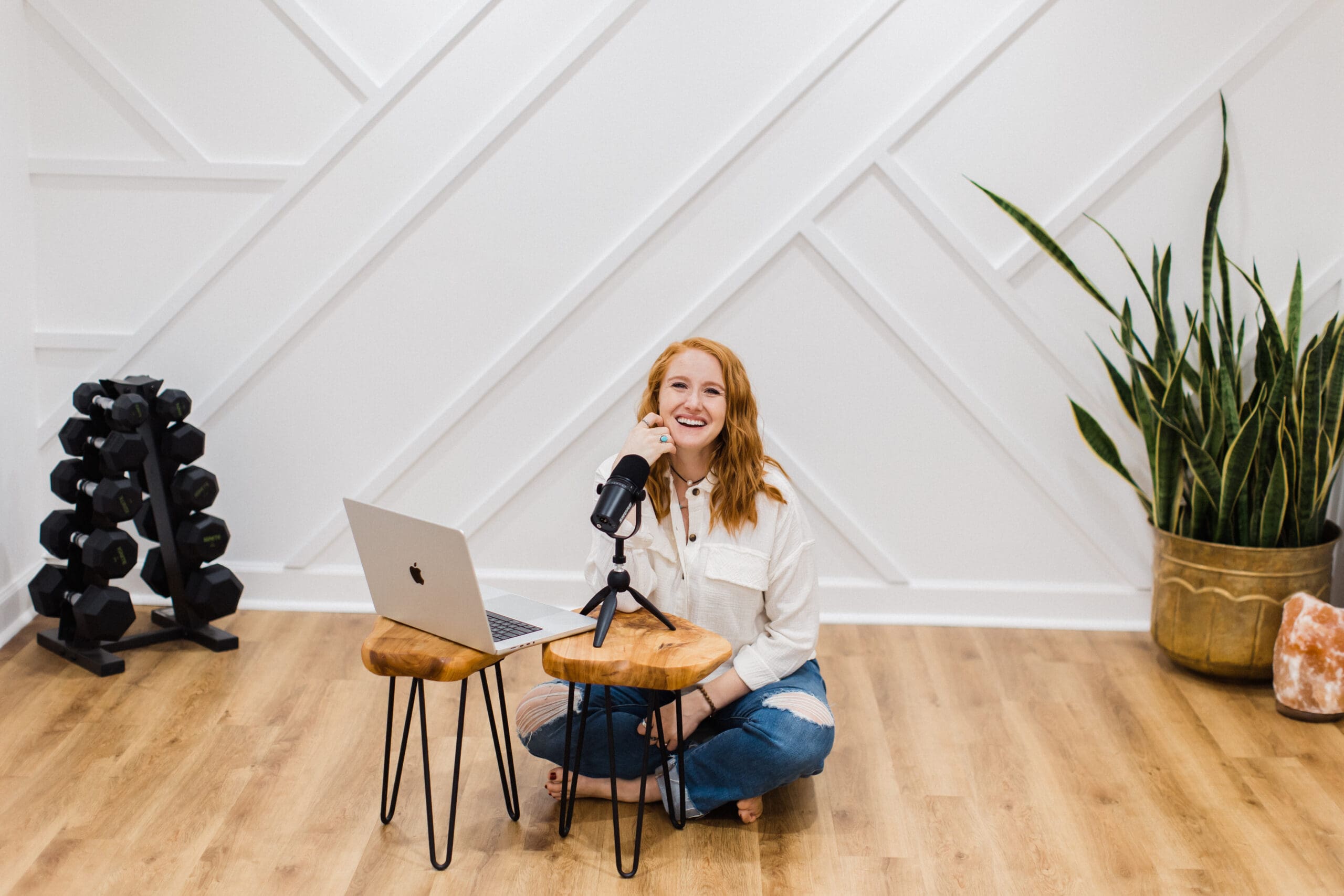Unpacking the “I’m Too Much” Belief: Nervous System-Informed Therapy Reflections
Episode 69: Spotify | Apple Podcasts | YouTube
View transcript on Buzzsprout
“One of my deepest beliefs is that, I’m too much– I’m too loud, I’m too energetic, I ask too much, need too much, my idea’s or dreams or plans are all too much, my pace is too much, etc… It’s a wound that gets triggered a lot in my friendships, entrepreneurship, and especially in my marriage. It’s also a belief that holds me back from fully showing up in a lot of areas of my life,” shares Amanda.
This week’s episode is a vulnerable, reflective conversation about how all our beliefs, while well-meaning and self-protective at one point, may no longer serving us anymore and when left unchecked they can hold us back in our healing journey and keep us stuck in patterns we don’t want anymore.
What We Cover in This Episode
- Amanda’s decision to return to therapy during a season of capacity
- A breakdown of the trauma-informed healing pyramid
- How old beliefs like “I’m too much” take root and shape behavior
- Real-time reflections and therapy insights
- How to test and reframe persistent, limiting beliefs
Healing in Phases: Amanda’s Trauma-Informed Pyramid
Amanda opens with a reminder that healing isn’t linear or one-size-fits-all. She introduces her trauma-informed pyramid of healing (featured on pages 84–85 of her book Healing Through the Vagus Nerve) to explain why now, in a season of regulation and capacity, therapy is the right fit.
The four phases of the pyramid:
- Education & Awareness – Learn how the nervous system works and map your own system.
- Regulation – Build daily tools to shift from survival to safety.
- Rewiring – Address deeper trauma and beliefs once you have enough capacity.
- Resourcing – Sustain healing with supportive habits and environments.
Many people attempt to jump to phase 3 (rewiring) before they’re ready—which can actually make symptoms worse. Amanda explains why she’s stepping into rewiring work now and how therapy is helping her examine deeply embedded beliefs.
Where Beliefs Begin: “I’m Too Much”
A central theme of Amanda’s current work is untangling the belief that she’s “too much.”
This belief traces back to moments as early as fifth grade—like being told she was “too hyper” on the playground. That moment and others like it instilled a pattern of shrinking, dimming, and chameleon-ing to be more acceptable. Over time, this became a way of being.
In high school, the feeling of never quite fitting in reinforced the belief. Whether with smart friends, athletes, or artists, Amanda felt the need to tone down or play up different aspects of herself to be accepted.
Testing the Belief: From Therapy to Daily Life
Recently in therapy, Amanda voiced a fear: “Sometimes I think my husband would prefer a more muted version of me.”
Her therapist offered a powerful insight: “As long as you believe that, you’ll filter everything through that lens.”
This led to a turning point: Amanda was challenged to test the accuracy of that belief. What if she asked her husband directly? What if she looked for evidence that contradicted the assumption?
And more importantly:
- What do you risk if you stop muting yourself?
- What do you gain if you stop muting yourself?
These questions aren’t just about relationships. They apply to how we show up in every area of life—and how our nervous system responds to the perceived risk of being fully seen.
The Role of the Nervous System in Rewiring
Amanda reminds us that beliefs live in both the mind and the body. The fear of being “too much” isn’t just a thought—it’s a felt experience, stored in the nervous system.
That’s why nervous system regulation matters. It’s what allows you to feel safe enough to explore new beliefs and behaviors.
Therapy didn’t feel helpful for Amanda in the past because it was too much processing with an inability to regulate, this work isn’t just about insight—it’s about creating capacity. Amanda emphasizes that this deeper work only became accessible because she’s already done the work of regulating and building safety.
What you find inside the Regulated Living Membership and Restore 1:1 Coaching are the programs, tools, and support she wishes she would have had earlier on her healing journey. If you’re looking for a new way of healing, we’re here.
Three Tangible Takeaways
- Healing work has a sequence. Jumping into trauma processing without regulation and awareness can backfire. Start with capacity-building.
- Beliefs filter reality. What you believe about yourself (or your healing) affects how you interpret everything. Awareness is the first step to change.
- Ask: What do I risk or gain if I stop believing this? Testing your beliefs can unlock clarity and healing—especially when you combine insight with nervous system support.
Looking for more personalized support?
- Book a FREE discovery call for RESTORE, our 1:1 anxiety & depression coaching program (HSA/FSA eligible & includes comprehensive bloodwork)
- Join me inside the Regulated Living Membership, a mental health membership and nervous system healing space (sliding scale pricing available)
- Join my Release Class – Monthly guided nervous system regulation class
- Order my book, Healing Through the Vagus Nerve today!
- Download free resources here
*Want me to talk about something specific on the podcast? Let me know HERE.
Disclaimer: This article is for informational purposes only and is not a substitute for professional medical advice, diagnosis, or treatment. Always seek the advice of your physician or qualified mental health provider with any questions you may have regarding a medical condition.

Leave a Reply Cancel reply
A mental health newsletter that feels like a deep breath: simple, grounding, and here to remind you that healing is possible.
The Weekly Rewire
Navigate
Regulated Living provides neuroscience-backed mental health coaching to help you regulate your nervous system and reclaim your life from anxiety and depression.
Heal
Learn
Paragraph